A Good Bake: The Art and Science of Making Perfect Pastries, Cakes, Cookies, Pies and Breads at Home by Melissa Weller with Carolyn Carreño (Knopf, November 2020) teaches us about the fundamentals of baking and shows us how we can create beautiful bakes in our home kitchens.
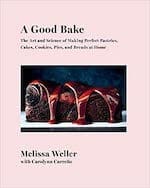
Melissa Weller is a James Beard Award nominated baker who initially trained at the French Culinary Institute. She went on to perfect her craft at such places as Babbo, the Sullivan Street Bakery, Per Se, and Bouchon Bakery in New York City.
Throughout the book, Weller shares the evolution of many of her recipes and provides us with meticulous details on how to execute every step. We are also privy to why she uses certain ingredients and methods in the recipes and what makes them work.
Many of the recipes are multi-step with recipes within recipes and can take several hours to prepare, although the actual hands-on time is much less. You will enjoy this book if you have extra time on your hands and really want to delve into a baking project. Once I got into the swing of things, I have enjoyed baking the recipes immensely. While they can be long with many steps involved, the steps themselves are not overly challenging.
The photography is by Johnny Miller and there are some truly beautiful photos captured within the book. There is not a photo of every recipe, so be prepared if you’re more of a visual learner.
A great addition to any serious baker’s bookshelf, this book from the ‘sticky-bun queen’ is a true keeper.
The Recipes
The recipes in the book are divided into eight sections: Savory Breads, Sweet Yeasted Breads, Laminated Pastries, A Short and Sweet Chapter on Fried Dough, Pies and Tarts, Layer Cakes and Frostings, Quick Breads and Casual Cakes, and Cookies and Bars. I have been slowly baking my way through this book and I’ve shared some of my favourite bakes below.
Many of the recipes have recipes within a recipe, so planning and patience is key when using this book. Make sure to read the entire recipe through a couple of times before you begin so you can plan your time and the steps accordingly!
You’ll find that most of the ingredients are fairly common and easy to find. The tools called for are also standard, although Weller does use a stand mixer with a dough hook for many of the recipes. One tool I would highly recommend for ease of making these recipes is a digital scale. I find using a scale so much easier and less of a mess than using cups as measures. I use an inexpensive one that I picked up for less than $20. Weller does provide volume measurements for all of the recipes if you are unable to get your hands on a scale.
Sourdough Starter (pp. xxxiii – pp. xxxix)
It all starts with a sourdough starter for many of the recipes I have made in this book. To be honest, the idea of feeding and nurturing a starter is much fussier than I tend to get when I’m baking, but I was determined to make these recipes in the way the author intended, so I gave it a go.
My first two attempts at a starter failed miserably. I could not encourage life into it no matter what I did!
Sourdough starter is notorious for being finnicky, so I decided to try another recipe other than the one provided in the book and lo and behold, it came alive! I am now the proud owner of a strong starter!
The recipe I had the most success with is from The Pantry Mama.
Six-Strand Challah Loaf (pp. 65 – 69)
The Six-Strand Challah Loaf was the first full recipe I tried and the first real loaf of bread I had ever baked. It calls for some of the sourdough starter, so thankfully mine was well underway.
The recipe makes two loaves, which can be made in half a day taking into account for the proving time of 3 – 4 hours.
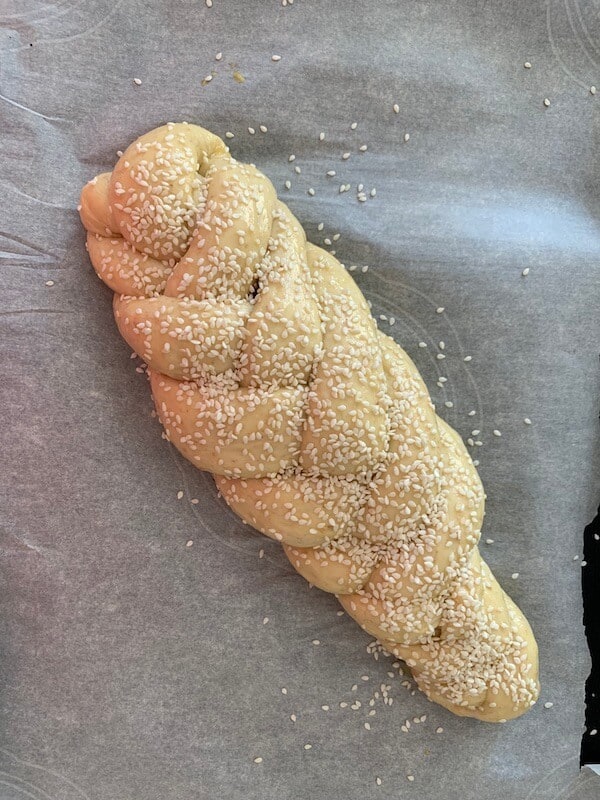
There is a wonderful visual guide to show how to braid the loaves, which I found to be very helpful as this was my first attempt at not just making bread, but a braided loaf.
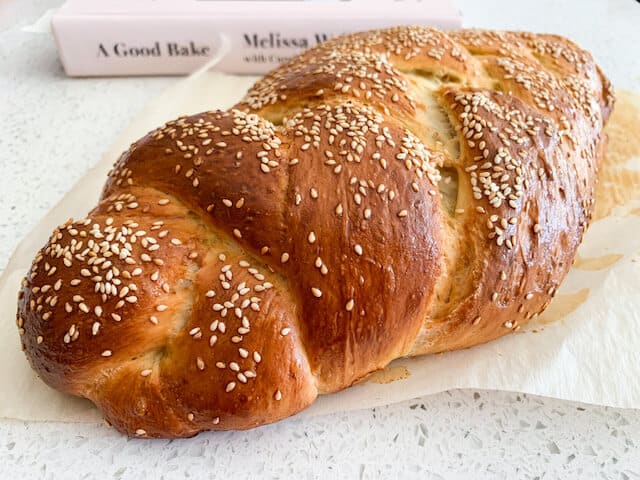
The finished loaves turned out well. They had a good flavour and the crust was crispy and chewy. I couldn’t quite get the dark burnished look of the photos in the book, but overall I was happy them. We ate most of the loaves in thick toasted slices with a generous smear of butter.
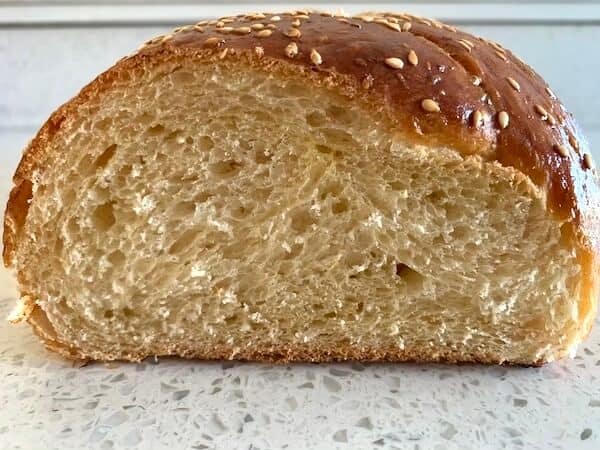
Cardamom Cinnamon Rolls with Buttermilk Glaze (pp. 109 – 111)
This recipe has a lot of potential but fell a little bit short for me. I’ll admit to baker error on my part, so I will definitely try them again now that I’ve been through the process once and learned along the way.
These rolls are made from a yeasted buttery brioche dough which includes a hint of cardamom. The filling is simply made of butter, brown sugar and cinnamon. Then the baked rolls are topped with a buttermilk glaze.
I prepped these rolls the night before I wanted to serve them and left them to proof overnight in the fridge.
The instructions call for making the dough in a stand mixer with the dough hook. Again, it was the first time I was making brioche dough and so I was not entirely sure what I was looking for in the finished dough. To that end, I didn’t incorporate the butter into the dough as fully as I should have, which I think, resulted in a tougher dough.
The dough was quite sticky to work with, but I was able to roll it out and form the rolls easily.

Once the rolls baked and cooled, I poured over the buttermilk glaze. The glaze is quite sweet, so I think next time, I would make only half of the recipe.
The overall texture of the rolls was a bit tough and not as light as I think it should have been. The next time I make the recipe, I will make sure the butter is fully incorporated, which for me, will mean kneading the dough in the stand mixer for a few extra minutes.
Classic Croissants (pp. 139 – 141)
This is the winning recipe right here! I thought I knew what croissants should taste like up until I made these beauties. I was blown away by the flavour and flakiness.
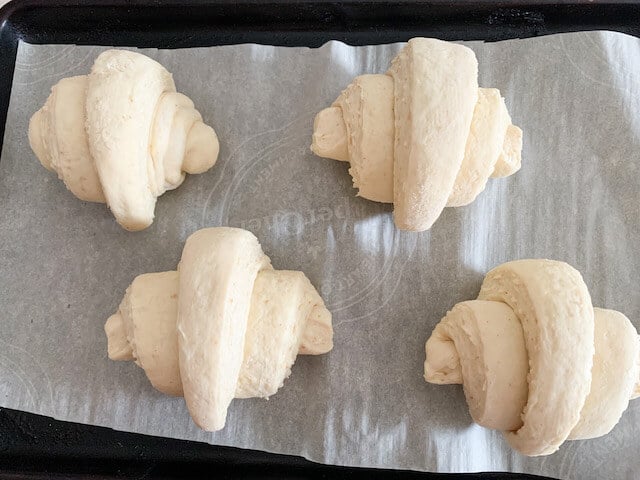
This recipe takes time to make and I spanned the process over two days. The instructions are clear and lead you through the many folds and turns you have to make in order to achieve the beautiful lamination required.

Weller teaches us to make a ‘butter packet’, which made it so easy to roll into the dough. I admit to having one or two of these packets on hand now in case the mood strikes for some laminated dough.
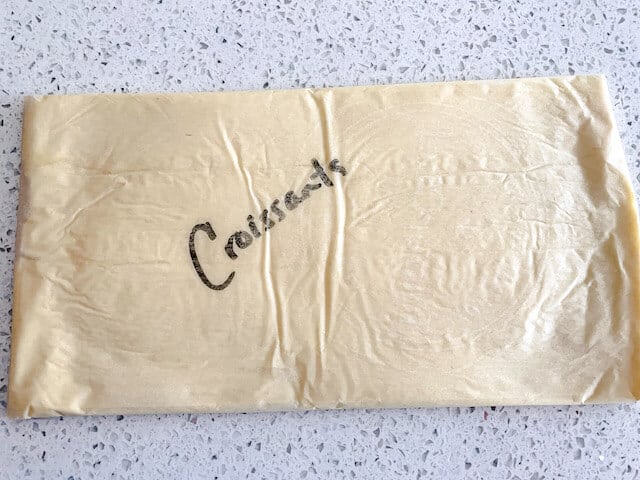
The finished croissants were perfect. Light, flaky, and buttery. Everything that a French pastry should be. If you are only going to make one recipe from this book, this should be the one.
Salted Caramel Sticky Buns (pp. 131 – 134)
Another successful recipe, these Salted Caramel Sticky Buns are a real indulgence.
The buns are another laminated dough recipe and the crisp flakiness achieved is remarkable. Weller proclaims that sticky buns are what she has become best known for and it’s not difficult to see why.
I started this recipe the night before I wanted to bake them to allow for the proving time.
I made the buns in large muffin cups. The recipe makes 24 buns, so I froze half of the prepared dough once it got to the filled and rolled stage (and before cutting into individual sizes for baking) to bake another day.
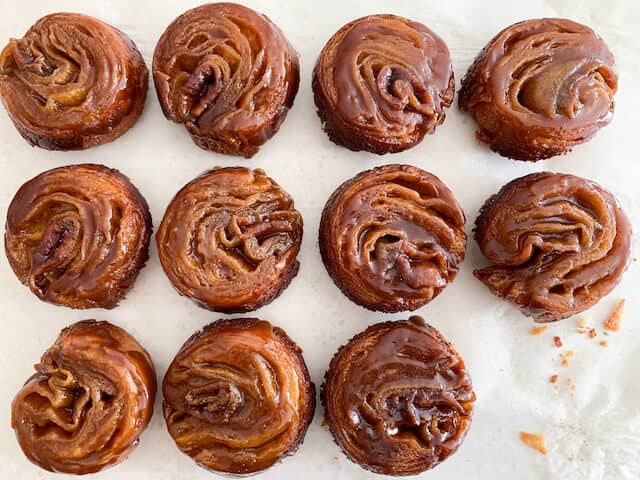
The buns themselves are not too big, but really pack a salty-sweet flavour wallop. Overall, the recipe was easy to make and I would make it again for a special treat.
Johnny Cash’s Mother’s Pineapple Rum Chess Pie (pp. 275 – 278)
Johnny Cash’s mother has become popular in her own right owing to this recipe for pineapple pie.
The recipe calls for fresh pineapple which is baked into a custard. The addition of cornmeal to the custard adds a hint of crunch. Everything is poured into a paté brisée crust and baked until golden.
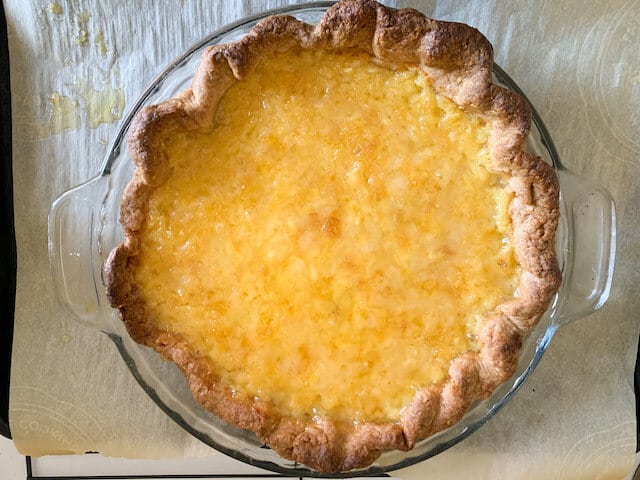
The pie crust is the star of this bake. It was buttery, light, and flaky and I could have eaten it all on its own.

The overall pie was a success. It was sweet, slightly tart and the perfect ending to a family meal.
Summary
A Good Bake is a worthwhile tome to add to your cookbook library, particularly if you’re open to trying recipes that require time and multiple steps. Where the book lacks in photo guidance of finished bakes, it certainly makes up for it in the depth of written instructions. Weller provides full directions of how to execute her recipes while at the same time giving us a glimpse into the science involved when we combine certain ingredients. Overall, this is a book you can turn to again and again to produce good bakes at home.
| Book Title | A Good Bake |
| Author | Melissa Weller with Carolyn Carreño |
| Publisher | Knopf |
| Publishing Date | November 17, 2020 |
| Format(s) | Hardcover, Kindle |
| Page Numbers | 496 |
| Photos of Every Recipe? | No |
| Who is this book for? | Bakers who have time to spare and wish to learn more advanced techniques besides the basics. |
For more book reviews:
How to Be a Domestic Goddess by Nigella Lawson
Baking with Less Sugar by Joanne Chang
Share your baking!
If you make any recipes from A Good Bake, be sure to leave a comment or share your photos on Instagram. I love hearing from you! Don’t forget to use the hashtag #bakersbookshelf.
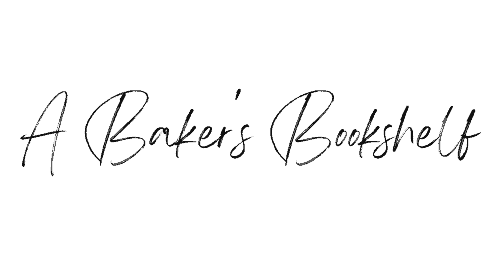



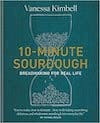
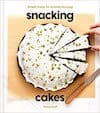
Leave a Reply